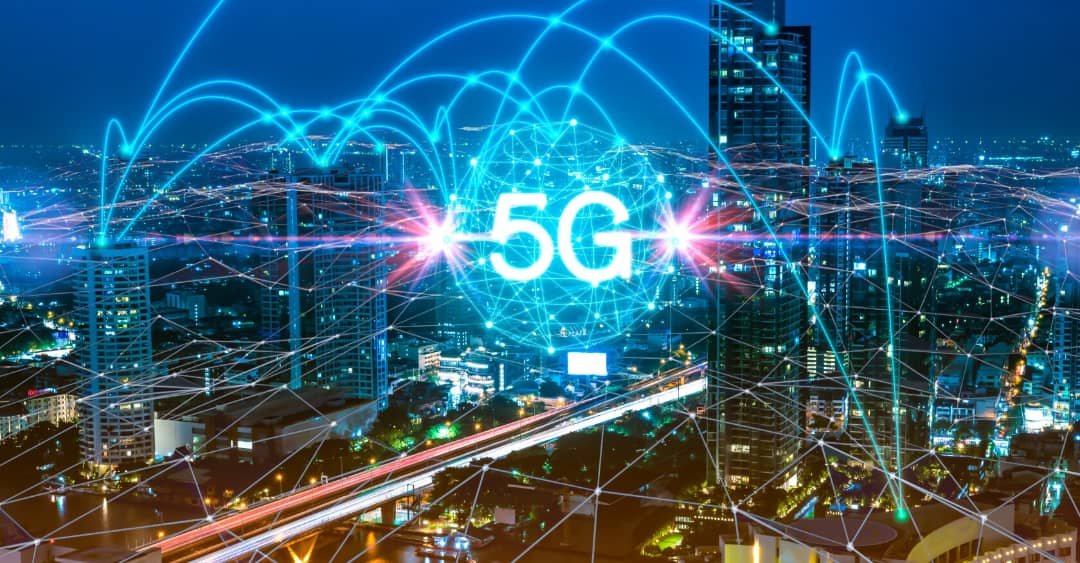The Internet of Things (IoT) is a network of physical devices that are embedded with sensors, software, and other technologies for the purpose of connecting and exchanging data with other devices and systems over the internet. IoT devices can be anything from smart home appliances to industrial sensors to wearable devices.
The expansion of the IoT is being driven by a number of factors, including the declining cost of sensors and processing power, the increasing availability of broadband internet, and the growing demand for data-driven insights. 5G is expected to play a major role in enabling the expansion of the IoT by providing the necessary connectivity, speed, and reliability.
5G Capabilities
5G is the fifth generation of cellular network technology. It offers a number of advantages over previous generations, including:
Speed: 5G is significantly faster than 4G, with peak speeds of up to 10 gigabits per second (Gbps). This makes it possible to transmit large amounts of data quickly, which is essential for many IoT applications.
Latency: 5G has very low latency, which means that there is very little delay between sending and receiving data. This is important for IoT applications that require real-time data processing, such as self-driving cars and industrial control systems.
Reliability: 5G is more reliable than previous generations of cellular networks. This is important for IoT applications that need to be able to operate continuously without interruption.
Capacity: 5G can support a much larger number of connected devices than previous generations. This is essential for the IoT, which is expected to involve billions of connected devices.
5G and the IoT
5G is expected to enable a wide range of new IoT applications. Here are a few examples:
Smart cities: 5G can be used to create smart cities that are more efficient and sustainable. For example, 5G-connected traffic lights can be used to optimize traffic flow, and 5G-connected sensors can be used to monitor air quality and water levels.
Industrial IoT: 5G can be used to improve the efficiency and productivity of industrial operations. For example, 5G-connected robots can be used to automate tasks in factories, and 5G-connected sensors can be used to monitor equipment performance and predict maintenance needs.
Connected health: 5G can be used to improve the quality and accessibility of healthcare. For example, 5G-connected remote patient monitoring devices can be used to track patients’ vital signs from home, and 5G-connected surgical robots can be used to perform complex surgeries remotely.
Connected homes: 5G can be used to create more connected and intelligent homes. For example, 5G-connected smart speakers can be used to control multiple devices in the home, and 5G-connected security systems can provide real-time alerts to homeowners.
Challenges
While 5G has the potential to enable the expansion of the IoT, there are a number of challenges that need to be addressed. One challenge is the cost of deploying and maintaining 5G networks. Another challenge is the need to develop new security and privacy solutions for 5G-connected devices.
Conclusion
5G is expected to play a major role in enabling the expansion of the IoT. 5G’s speed, latency, reliability, and capacity make it ideal for a wide range of IoT applications. However, there are a number of challenges that need to be addressed before 5G can be widely deployed and used for IoT applications.
Here are some specific examples of how 5G is being used to enable the expansion of the IoT:
Smart cities: 5G is being used to develop smart cities around the world. For example, the city of Barcelona is using 5G to connect traffic lights, parking sensors, and other devices to improve traffic flow and reduce congestion.
Industrial IoT: 5G is being used to improve the efficiency and productivity of industrial operations. For example, the company Siemens is using 5G to connect robots and sensors in its factories to improve production quality and reduce downtime.
Connected health: 5G is being used to develop new connected health applications. For example, the company Medtronic is developing 5G-connected insulin pumps that can deliver insulin to patients automatically.
Connected homes: 5G is being used to create more connected and intelligent homes. For example, the company Verizon is offering a 5G Home Internet service that provides high-speed internet access to homes and businesses.
Overall, 5G is a key enabler of the IoT. As 5G networks are deployed more widely, we can expect to see an explosion of new IoT applications.
Source: Africa Publicity








